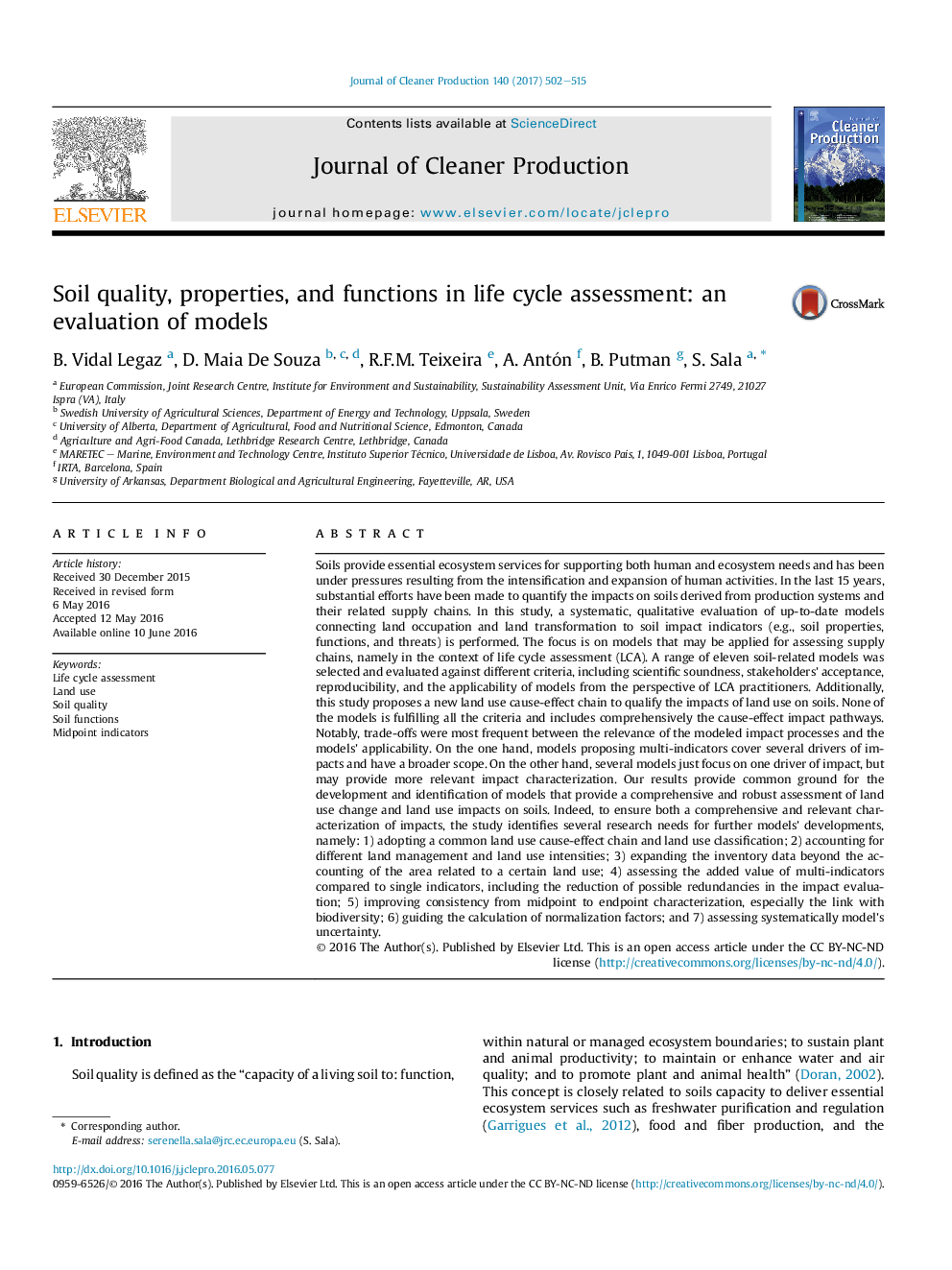| کد مقاله | کد نشریه | سال انتشار | مقاله انگلیسی | نسخه تمام متن |
|---|---|---|---|---|
| 5481527 | 1399335 | 2017 | 14 صفحه PDF | دانلود رایگان |
- The study evaluated models focusing on soil properties and functions.
- Both single-indicators and multi-indicators have been assessed.
- Models were evaluated against criteria from scientific robustness to applicability in LCA.
- No one model meets all the criteria needed to fully depict of impacts on soil properties and function.
- Further research is needed to improve soil modeling and their applicability in LCA.
Soils provide essential ecosystem services for supporting both human and ecosystem needs and has been under pressures resulting from the intensification and expansion of human activities. In the last 15 years, substantial efforts have been made to quantify the impacts on soils derived from production systems and their related supply chains. In this study, a systematic, qualitative evaluation of up-to-date models connecting land occupation and land transformation to soil impact indicators (e.g., soil properties, functions, and threats) is performed. The focus is on models that may be applied for assessing supply chains, namely in the context of life cycle assessment (LCA). A range of eleven soil-related models was selected and evaluated against different criteria, including scientific soundness, stakeholders' acceptance, reproducibility, and the applicability of models from the perspective of LCA practitioners. Additionally, this study proposes a new land use cause-effect chain to qualify the impacts of land use on soils. None of the models is fulfilling all the criteria and includes comprehensively the cause-effect impact pathways. Notably, trade-offs were most frequent between the relevance of the modeled impact processes and the models' applicability. On the one hand, models proposing multi-indicators cover several drivers of impacts and have a broader scope. On the other hand, several models just focus on one driver of impact, but may provide more relevant impact characterization. Our results provide common ground for the development and identification of models that provide a comprehensive and robust assessment of land use change and land use impacts on soils. Indeed, to ensure both a comprehensive and relevant characterization of impacts, the study identifies several research needs for further models' developments, namely: 1) adopting a common land use cause-effect chain and land use classification; 2) accounting for different land management and land use intensities; 3) expanding the inventory data beyond the accounting of the area related to a certain land use; 4) assessing the added value of multi-indicators compared to single indicators, including the reduction of possible redundancies in the impact evaluation; 5) improving consistency from midpoint to endpoint characterization, especially the link with biodiversity; 6) guiding the calculation of normalization factors; and 7) assessing systematically model's uncertainty.
Journal: Journal of Cleaner Production - Volume 140, Part 2, 1 January 2017, Pages 502-515
